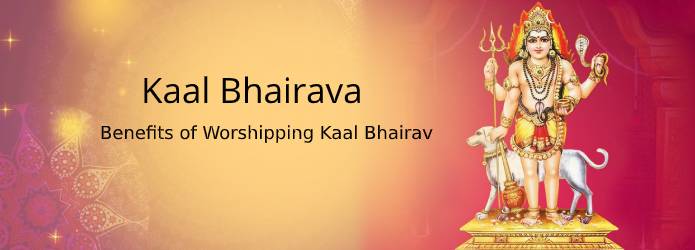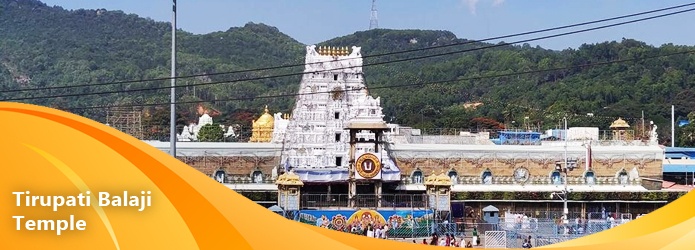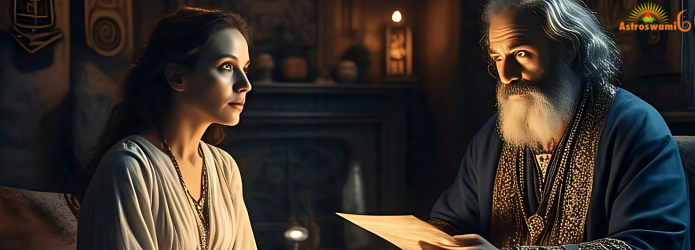
Kala Bhairava is a deity of the Hindus and is believed to be a manifestation of Shiva in its fiercest form. He also has other names such as Dandapani and Swaswa. The avatar of Shiva took form on Ashtami Tithi (eighth day), during Krishna Paksha in the Margashirsha month. His worshippers are spread across India, Nepal and Sri Lanka, Tibetian, and Buddhists also worship him.
It is believed that Shiva assumed the form of the Kala Bhairava, to guard Shaktipeeth or Shakti temples. There is always a temple of Bhairava in the Shakti temples. Another ancient belief says that Bhairava was created by Shiva and is one of his sons.
Ashta Bhairavas are eight manifestations of Bhairava, who guards the eight directions. Each Bhairava controls seven subs Bhairavas and all of them are in control of Maha Kala Bhairava which is considered to be the supreme form of Bhairava. Lord Shiva is Mahā Bhairava. Bhairavi is the associate of Kala Bhairava.
In Shiva temples, idols of Bhairava are placed in the north, with face to the West. His form is standing with four hands. His weapons are drum, noose, trident and skull and also have a dog with him and a gold vessel. His appearance is terrifying. In Shiva temples, regular puja starts with Surya and ends with Bhairava. Performing pūja dedicated to him on Tuesdays will reap great rewards to the worshipper.
In Shiva temples, after the temple is closed, the keys are placed before Lord Bhairava. Bhakts or devotees have full faith that worshipping Bhairava will bring them prosperity, success and good children, gain long life and remove financial problems. He is considered a destroyer of all things bad such as lust and greed as also fear. He protects weak women who seek his help. The most auspicious time to offer petitions to this Lord is at midnight, especially on Friday night.
During Bhairav Jayanti or Kalashtami, devotees keep a fast the entire day and perform puja at midnight, followed by aarti. Prasad is given to a dog, who is the vehicle of Kaal Bhairav. This day is celebrated with lots of fanfare at the Bhairav Prasad sanctuary at Vaishno Devi, Kashmir. Here a symbolic Lord Bhairav is carved in precious metal and submerged into a metal pot filled with water.
On Kaal Bhairav Jayanti the seeker must read the Kalabhairava Ashtakam and chant the following Bhairav mantras.
Kaal bhairava Beej Mantra,
Kaal bhairava Gayatri Mantra,
Kaal Bhairava Ashtakam.
Om Hraam Hreem Hroom Hrime Hroum Ksham Kshetrapaalaaya Kaala Bhairavaaya Namaha
Om Kaalakaalaaya Vidhmahey Kaalaatheethaaya dheemahi
Thanno Kaala Bhairava Prachodhayaath
and
Swarnat Vijaya Vidmahe Sula Hastaya Dhimahi
Tanno Kaal Bhairavaya Prachodayat
Dēvarājasēvyamānapāvanāṅghripaṅkajaṁ
Vyālayajñasūtraminduśēkharaṁ kr̥pākaram||
Nāradādiyōgivr̥ndavanditaṁ digambaraṁ
kāśikāpurādhināthakālabhairavaṁ bhajē||
Bhānukōṭibhāsvaraṁ bhavābdhitārakaṁ paraṁ
nīlakaṇṭhamīpsitārthadāyakaṁ trilōcanam||
Kālakālamambujākṣamakṣaśūlamakṣaraṁ
kāśikāpurādhināthakālabhairavaṁ bhajē||
Śūlaṭaṅkapāśadaṇḍapāṇimādikāraṇaṁ
śyāmakāyamādidēvamakṣaraṁ nirāmayam||
Bhīmavikramaṁ prabhuṁ vicitratāṇḍavapriyaṁ
kāśikāpurādhināthakālabhairavaṁ bhajē||
Bhuktimuktidāyakaṁ praśastacāruvigrahaṁ
bhaktavatsalaṁ sthitaṁ samastalōkavigraham||
Vinikvaṇanmanōjñahēmakiṅkiṇīlasatkaṭiṁ
kāśikāpurādhināthakālabhairavaṁ bhajē||
Dharmasētupālakaṁ tvadharmamārganāśakaṁ
karmapāśamōcakaṁ suśarmadāyakaṁ vibhum||
Svarṇavarṇaśēṣapāśaśōbhitāṅgamaṇḍalaṁ
kāśikāpurādhināthakālabhairavaṁ bhajē||
Ratnapādukāprabhābhirāmapādayugmakaṁ
nityamadvitīyamiṣṭadaivataṁ niran̄janam||
Mr̥tyudarpanāśanaṁ karāladanṣṭramōkṣaṇaṁ
kāśikāpurādhināthakālabhairavaṁ bhajē||
Aṭṭahāsabhinnapadmajāṇḍakōśasantatiṁ
dr̥ṣṭipātanaṣṭapāpajālamugraśāsanam||
Aṣṭasid'dhidāyakaṁ kapālamālikādharaṁ
kāśikāpurādhināthakālabhairavaṁ bhajē||
Bhūtasaṅghanāyakaṁ viśālakīrtidāyakaṁ
kāśivāsalōkapuṇyapāpaśōdhakaṁ vibhum||
Nītimārgakōvidaṁ purātanaṁ jagatpatiṁ
kāśikāpurādhināthakālabhairavaṁ bhajē||
Kālabhairavāṣṭakaṁ paṭhanti yē manōharaṁ
jñānamuktisādhanaṁ vicitrapuṇyavardhanam||
Śōkamōhadain'yalōbhakōpatāpanāśanaṁ
prayānti kālabhairavāṅghrisannidhiṁ narā dhruvam||
The Kaal Bhairav Katha and Bhairav mantras are a significant part of the worship of Kaal Bhairav.
According to one Puranik Katha, Lord Shiva, took the fiercest form to punish Lord Brahma. The narrative states that Lord Brahma being the creator of the Universe grew proud and arrogant, some even say that Lord Brahma also abused Lord Shiva. Lord Brahma with five heads had such behaviour towards Mahadev that made Shiva extremely angry so much so that he cut off one of Brahma's heads with his nail. The skull remains stuck to the nail and is called Brahma Kapala.
Bhairav temples have a depiction of the Brahma Kapala. Having so sinned Lord Shiva had to wander from town to town as a beggar until he reached Kashi. It was in this place that Kaal Bhairav was absolved of his sin. However, the main purpose of the appearance of Kaal Bhairav was to signify a removal of arrogance, pride and other vices. Brahma learnt his lesson, and he apologised to Lord Shiva. Kaal Bhairav was given the responsibility of protecting Kashi after that and is also known in Kashi as Kashi Ka Kotwal.
Kaal Bhairav is also the Guru or Lord of Shani or planet Saturn. Saturn is believed to be the son of Sun and also its principal adversary. According to Indian Astrology, Shani or Saturn shows results as per karma of the native that is not affected by the Pujas performed. Saturn is the giver according to deeds, he will make you work hard to get the reward. The planet also represents justice and uprightness. Saturn is one of the most feared planets as when it punishes for bad deeds or karma, its impact stays for years. Saturn is slow-moving and therefore its outcomes remain for so long that even a king can become a beggar.
Learn more about the Puja Vidhi and Vrat Vidhi of worship of Kala Bhairava from our learned scholars and astrologers, call us or chat with us by taking advantage of free astrology consultation.

Many festivals are celebrated in India and Shardiya Navratri festival has a great historical background....

The mind is represented by moon, its placement, condition and afflictions in the birth chart. ...

Sawan Shivratri 2022 - Holy month of Sawan is going on. This month, Shivaratri is considered special....

Tirupati Balaji Temple is one of the richest temples located in Andhra Pradesh....

Celebrate Ambedkar Jayanti by understanding your kundali. Book a free astrology chat on Astroswamig and discover how your online kundli can guide your...

Life is full of questions—some easy, some confusing, and some deeply personal. Whether you're unsure about your career, love life, or health, astrolog...